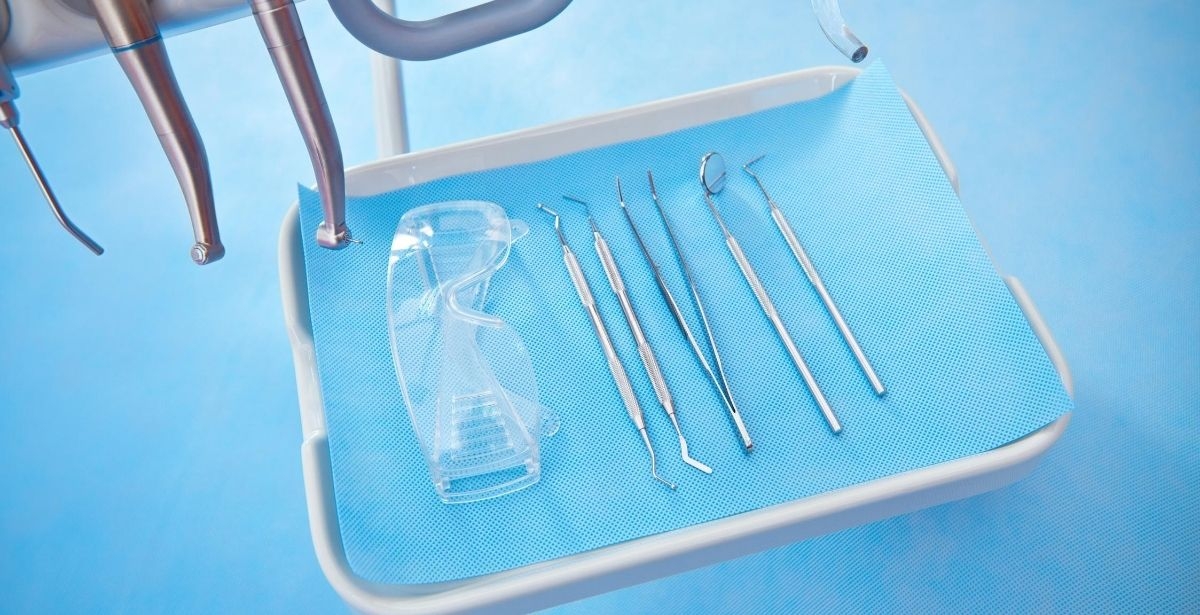
What Are the Most Common Dental Assistant Tools?
As a Dental Assistant, you’re going to need to handle and sterilize a wide range of modern equipment and instruments. Many of the tools you use or hand off to the dentist help keep the patient’s mouth dry and clear. That helps patients stay comfortable and lets the dentist see what they’re doing so they can do their jobs well. Understanding what tool the dentist needs—and when—will be one of your most important jobs. That’s why you need to learn about the most common tools and equipment you will use daily, such as the suction hose, high-volume evacuator, and air-water syringe.
Dental Assistant Tools
- Dental Tray: When you assist the dentist during procedures, you will need to place the right sterile tools on a sterile dental tray. Having the tools in one handy and safe location makes your job easier and more accurate. You can prepare what will be on that tray beforehand depending on what treatment will be performed. For example, you’ll ready one set of tools when a hygienist is doing a cleaning, and another when the dentist is filling a cavity.
- Sickle Probe: Also referred to as a dental explorer, this is one of the most common tools used during an exam. It looks like a metal stick and sometimes has a short hook on one end. Dentists use it to probe teeth as they look for signs of decay, soft spots, and cavities. New developments in dental technology provide alternatives to this method, such as a blunt explorer or probe, but the sickle probe is still one of the most basic and widely used dental tools.
- Dental Mirror: Used alongside the sickle probe, a dental mirror is a simple, but critical, tool. It has the same handle as a dental explorer, but it has a small, round mirror at its end. The mirror lets dentists examine teeth and gums from a variety of angles.
- Suction Hose: To keep the patient’s mouth clean and dry you will use the suction hose. This instrument removes saliva and small debris or tooth particles from the patient’s mouth and makes it easier for the dentist to see. The suction hose is a flexible white tube attached to a handle.
- High-Volume Evacuator: The evacuator looks like the suction hose, but it’s wider. It is used to suction up larger particles and prevents choking hazards, especially during oral surgeries, root canals, and fillings.
- Burnisher: Dental burnishers are used during fillings to smooth and polish a tooth restoration. They help the dentist sculpt and mold the amalgam filling so that it seamlessly looks like the rest of the tooth.
- Bitewing: As a dental assistant, one of your primary tasks will be to take and process x-rays. Bitewing imagery is a type of x-ray where the patient bites down on tabs that act as sensors or film. They capture signs of tooth decay, gum disease, bone density, and hard-to-see points of view of premolars and molars. The earlier the dentist identifies an onset dental issue, the more likely it can be treated before it becomes a problem.
Infection Control for Dental Assistant Tools
Dental instruments are classified into three categories depending on the risk of transmitting infection: critical, semi-critical, and non-critical. Critical instruments used to penetrate soft tissue, like the dental explorer, should be sterilized by an autoclave (steam under pressure) or dry heat. Semi-critical tools that come in contact with the patient’s mouth, such as the dental mirror, should be disinfected with a high-level material if it is not possible to sterilize. Non-critical instruments only come into contact with the patient’s skin and have a low risk of transmitting infection. You can use a “hospital disinfectant” to treat these types of tools.
Do these dental assistant tools make you curious about the career of a Dental Assistant? Dental Assistants perform many tasks, ranging from providing patient care and taking x rays to recordkeeping and scheduling appointments. Porter and Chester Institute’s Dental Assisting program in Connecticut and Massachusetts can prepare you to enter this exciting field in as few as nine months. Fill out the form to learn more now.






